

Following
Liberation in May 1945, the British army began the task of disposing of German
munitions and war material. Mobile
weapons were removed from their positions and eventually sealed in the many
tunnels excavated by the Germans. The
large fixed weapons such as those at Battery Dollmann were rendered inoperative
and left in position.
 |
Guernsey men and woman of the day were now able to see what the Germans had done to the island during the war. Many spent Sunday walks viewing the emplacements as they still do today.
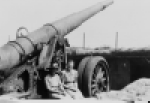 |
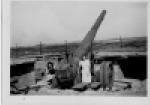 |
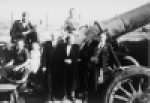 |
By
1947 Britain was in severe monetary crisis and scrap metal was in great demand
for export. By 1953 the island had
been cleared of all German weapons. In
Jersey, the post Liberation clear-up was carried out with even more haste,
smaller mobile weapons were dumped at sea and the heavy artillery, in a grand
gesture, was pushed over the cliffs at Les Landes.
This, ironically, would ensure their survival as, despite salvage
attempts by scrap metal merchants, they all remained at the base of the cliffs.
In the 1990s, a method of recovering the barrels was devised by Mr. Terry
O’Brien, an enthusiast with an engineering background.
Several were recovered, restored and put on public display.
In
September 1995 following negotiations with the scrap merchants who owned the
barrels and Jersey authorities, Guernsey Armouries with the assistance of Terry
O’Brien and the Jersey branch of the Channel Islands Occupation Society
undertook to recover a 22cm K532(f) barrel for display in Guernsey.
The operation to recover the eight ton barrel from the bottom of the
cliffs was achieved by stropping the barrel to a 30mm diameter 120 metre long
wire hawser run to the top of the cliff which in turn was shackled via 50 metre
cables to three ton mechanical loaders. On
command by radio all three vehicles accelerated forward and the barrel was
successfully dragged to the top of the cliffs.
In
1948 the States of Guernsey were keen to re-develop the island’s tourist
industry. As part of this a major initiative called ‘Operation
Coastal Cleanup’ was embarked upon to return the island’s coastline to its
former pre-war beauty.
The
work undertaken at Pleinmont headland alone gives some idea of the scale of the
task. After the guns had been cut
up for scrap, work began on re-landscaping the area.
A report from the Star newspaper stated that ten lorries were employed
for three months filling in an estimated five miles of trenches, bunkers and
associated works. With most visible traces obliterated, Battery Dollmann soon
faded from memory.
In 1997 Guernsey Armouries selected Gun Pit No. 3 to restore as an example of a German coastal artillery battery. After negotiations to secure a lease on the site and get permission from the relevant authorities, work could begin on excavating the back-filled trenches and pit. Initial inspection showed the bunkers to be remarkably intact with armoured doors and a bunker telephone still in situ.
An
estimated 1,000 tons of spoil was removed using an excavator although many tons
had to be shovelled out by hand. Work
could now begin on restoring the bunkers and pit.
All steelwork was shot-blasted and repainted, the original wiring in the
bunkers replaced and walls repainted. Externally
the camouflage has been replaced as original.
All work has been carried out as authentically as possible to return the
site to its wartime appearance.
Following
the successful recovery of a 22cm K532 (f) barrel from the base of cliffs at Les
Landes, Jersey, consideration was given as to the best way in which it could be
displayed. After various options
were investigated, it was decided to manufacture a replica chassis and cradle on
which the restored barrel could be mounted and positioned in an original gun
emplacement. An enquiry to the
French Ministry of Defence revealed that the original blue prints of the cannon
de 220L MLE 1917 were held at the Centre d’Archives de l’Armement in
Chatellerault and copies of the relevant plans were obtained so that work could
commence.
The first job was the restoration of the barrel. A layer of up to one inch thick of rust scale had to be smashed off with sledge hammers and chisels before it could be shot blasted and then painted. A local company, Marine & General Engineers undertook the fabrication of the replica chassis and mount which required careful design so as to be able to support the eight ton barrel. After a successful trial fit of the barrel the mount could be shot blasted and painted. A pair of original wooden spoked wheels were obtained locally and fitted. Finally in June 2001, the restored barrel and mount were lifted into position in the restored emplacement.
Today work still continues to put those final touches in place with new features still being restored. On some Sundays Uniformed guards can be seen and the Gun is fired on the Hour.
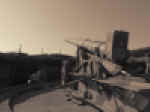 |
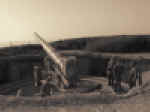 |
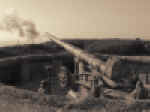 |